From Sadir Attam to Bharatanatyam
India is known for its rich, diverse culture which is showcased through its performing arts, handicrafts, paintings, sculptures and architecture. Ideologies, languages, and traditions of different communities resulted in the germination of a variety of performing art forms. Dance, being one of them, has played a vital role in Indian society from ancient times.
According to the legends, the first dance drama was presented to the Gods and demons at the court of Indra (Lord of the Wind). The dance drama based on Indra’s victory over the demons, was choreographed and produced by Bharata, in which his hundred sons participated as actors. As they rehearsed, Bharata felt the need of women to play the female characters. He then approached Brahma, the creator. On hearing this, Brahma created the Apsaras (celestial nymphs) who not only participated in the play but also became a part of Indra’s court.
Indian dance forms can be broadly classified into two categories; Classical Dance and Folk Dance. Most of these dance forms, whether classical or folk, have had a direct link with religion. Dance was often performed as an act of Bhakti (devotion) towards the deity.
All classical dance forms are based on what is called the Fifth Veda, the Natya Shastra. Though the exact date of origin of this text cannot be traced, mythologically, it is believed that on Lord Brahma’s command, Sage Bharata codified and documented the Natya Shastra.

Lord Brahma
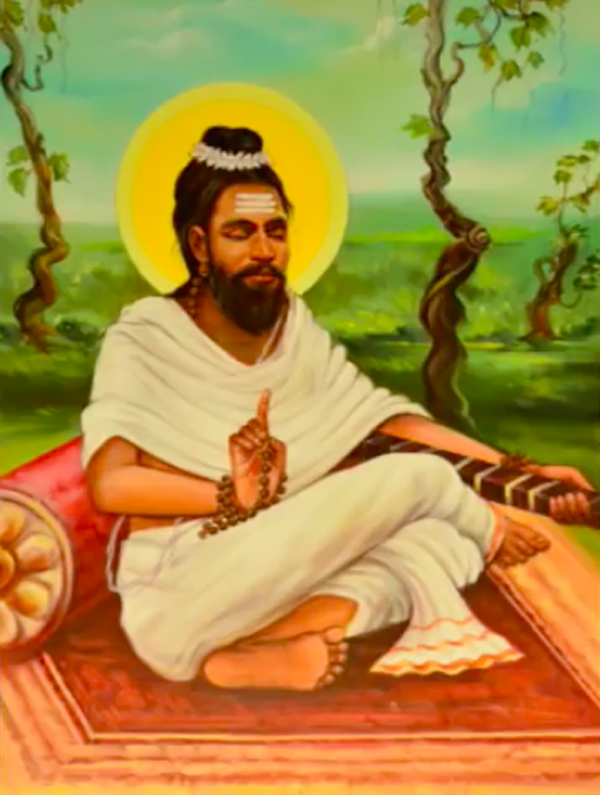
Sage Bharata
The Natya Shastra
नाथाथ शास्त्रं नाथाथ शिल्पं न स विद्या I
न स कला न असौयोग्यो नथतः कर्म ॥
यतः नाट्य न दृष्यथे I
'There is no shastra, no
sculpting, no knowledge, no art, no yoga and no
action that cannot be seen in natya.’
The Natya Shastra is considered the sacred text for all performing art forms. One of the major aspects of Natya Shastra, the Abhinaya (ways in which an actor communicates or expresses) has been mentioned in great detail in this text. Other aspects such as the graceful body movements and postures, the mudras (hand gestures) and rasas (aesthetic experience) used in dance, drama and other performing arts have also been documented extensively.
According to the Natya Shastra, art forms can be classified into three major categories:
Nritta - Nritta is solely based on the movement of the body to the rhythm of songs. It does not involve the use of Abhinaya to express.
Nritya - Nritya is a combination of Nritta and Abhinaya. Two major elements of Abhinaya include rasa (emotion) and bhav (facial expressions).
Natya - Natya refers to the art forms that involve the use of dialogues along with music and dance. In other words, they are dramatic representations of storytelling.
Most classical dance forms of India which are strictly based on the Natya Shastra, originated from within the temple complexes. One such example is the Sadir Attam of Tamil Nadu, today known as Bharatanatyam.

Bronze sculpture of Lord Nataraja currently at the National Museum, New Delhi.
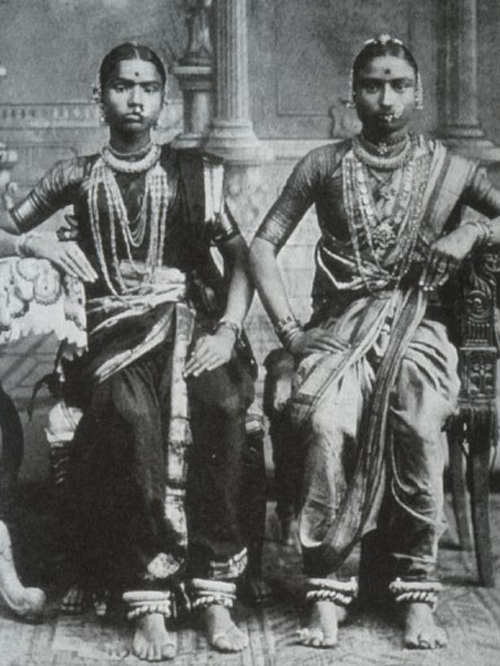
Devadasis of South India.
Devadasis of Tamil Nadu
Mythologically, it is believed that it was Urvashi, one of the Apsaras in Indra’s court who taught dance to the devadasis. Devadasis meaning Deva (deity) and Dasis (devotee) were the temple dancers of South India. The devadasi system was such that girls at a very young age were dedicated to the temple and were often considered to be married to the deity. This was commemorated by a ceremony called pottukattal, where girls were made to wear a bottu (golden chain) around their neck, symbolic of their marriage with the deity. There are references of devadasis often being called nritya sumangali (eternally married and free from widowhood). Once a girl became a devadasi, she started training in the dance form called Sadir Attam also known as Dasi Attam under the guidance of dance teachers called Nattuvanar or Koothiliar. The Nattuavanar played the role of a Guru and made sure that the art form was passed down from generation to generation. After years of training, on the occasion of their Arangetral (first dance performance), the devadasis earned the title of thalaikole.
Patronised by the Kings and other influential classes of society, the devadasis performed in the dance halls (natyamandapas) within the temple complexes. They were also involved in other activities associated with the temple and their dance was considered a vital part of ritual worship.

Devadasis dancing and playing instruments. Image Credits - PSBT
Different names were given to the dasis depending on which occasion they performed on, such as the Alankara Dasis who performed at weddings and other ceremonies and Rajadasis who danced at royal functions. It is said that the great Chola King, Raja Ra ja Deva I, patronised almost four hundred devadasis who performed ritual dances and ceremonies at the Brihadeswara Temple in Tanjore.
The devadasis occupied a respectable position in society until the advent of the British in India. The British looked down upon the Indian concepts of dance and believed them to be inferior to the western ideologies. Soon, the devadasis were pushed down in the social strata and were looked at as mere dasis (slaves) and prostitutes. The ruling class ceased patronising the art form and the artistes and soon the devadasi system drastically declined. It is said that as a result of this, the devadasis, in order to survive were forced to take up prostitution. The situation worsened till a time came when even the term devadasi was considered offensive and demeaning.
Adding to this, a bill was passed in the year 1947 that abolished the devadasi system, as a result of which the devadasi community was completely wiped out of the society. Even today, there are no traces of these families who had been dancing for decades.
Meanwhile, there were tremendous efforts made by personalities in reviving the art form. One such prominent personality involved was E Krishna Iyer, a lawyer and a freedom fighter who himself learnt and performed this art form.
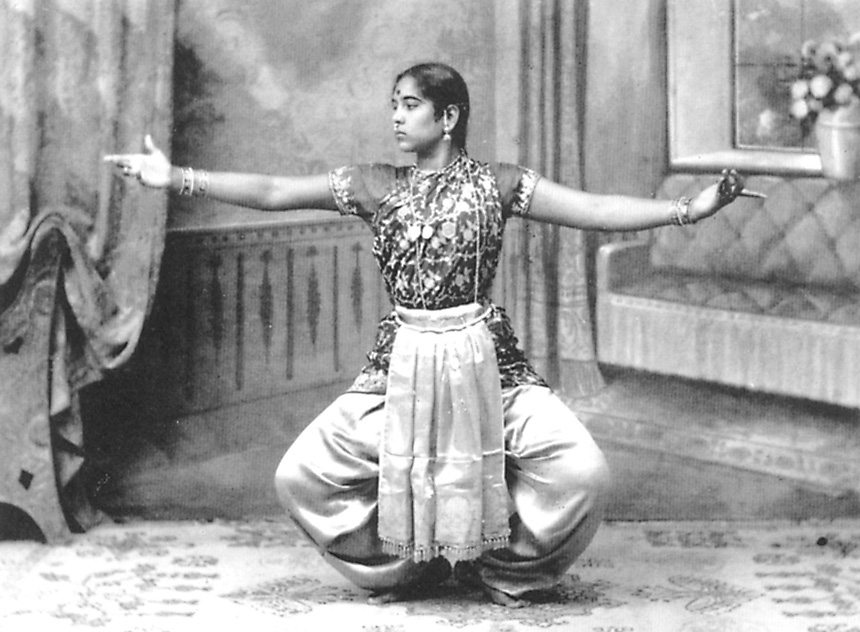
The famous Bharatanatyam dancer, T. Balasaraswati
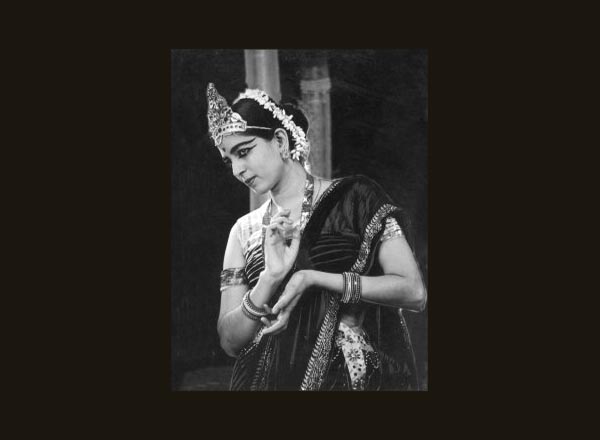
The founder of the Kalakshetra Institute, Chennai, Rukmini Devi Arundale.
T. Balasaraswati, was among the last few devadasis who continued to perform. She is credited for having preserved this traditional art form.
Another prominent figure is Rukmini Devi, who changed the views of people with her debut performance in 1935. She also founded the Kalakshetra Institute in Chennai that promoted performing art forms.
Bharatanatyam traces its lineage to the ancient dance of Sadir Attam. The transition from Sadir to Bharatanatyam is unknown but it is a classical dance form that was once on the verge of dying, and has managed to survive over the years.
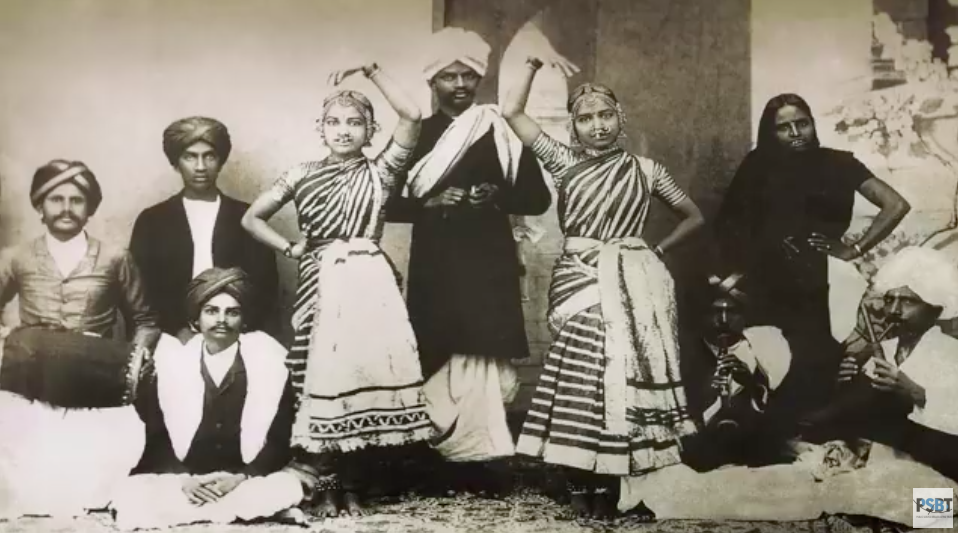
Devadasis of Tamil Nadu. Image Credits - PSBT
Bharatanatyam, Classical Dance form of India
The term Bharatanatyam is fairly new and is derived from the words, Bhava (expression), Raga (music), Tala (rhythmic pattern) and Natyam (dance). Bharatanatyam is a dance form not only based on Natya Shastra but also the Abhinaya Darpana, believed to be written by Nandikeswara.
Like the Natya Shastra, Abhinaya Darpana is a detailed text on the mudras, body movements and other gestures forming the basis of this art form.
Bharatanatyam is based on the concepts of Tandava and Lasya as mentioned in the Natya Shastra. These concepts are said to have originated from Lord Shiva’s dance.
According to legends, a play based on Samudramantha (Churning of the Ocean), choreographed by Sage Bharata was presented to Lord Shiva on Mount Kailasa. Lord Shiva, on seeing the performance was delighted to such an extent that he agreed to perform the Tandava. At the auspicious time of Pradosham, Shiva performed the Tandava and from that emerged the famous 108 Karanas (poses) which are represented on the walls of major temples of Tamil Nadu. As Shiva performed the Tandava, he realised that dance was incomplete without the softer expressions (Lasya). He went on to teach Lasya to his consort, Parvati who then performed for Lord Shiva. These were then documented by Sage Bharata and formed the basis of the Natya Shatra.
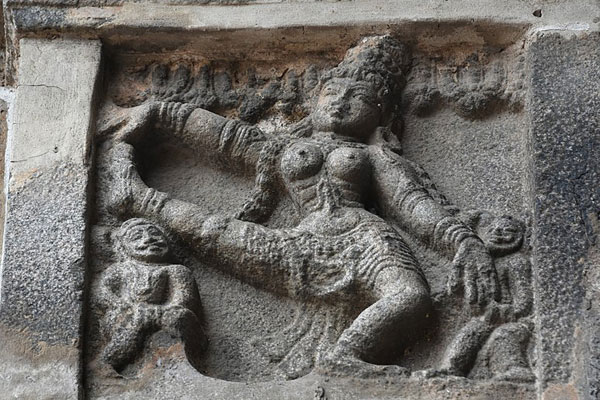
Vikshipta Karana, one of the 108 Karanas depicted on the walls of Nataraja Temple at Chidambaram.
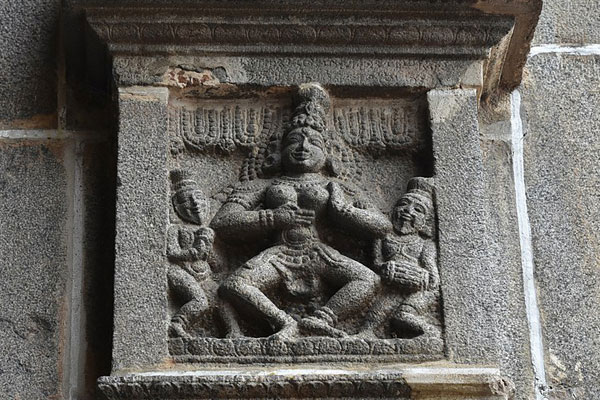
Vishkambha Karana, one of the 108 Karanas depicted on the walls of Nataraja Temple at Chidambaram.
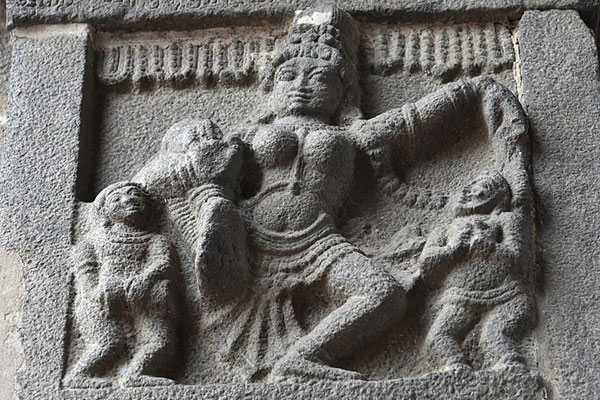
Parshwajanu Karana, one of the 108 Karanas depicted on the walls of Nataraja Temple at Chidambaram.
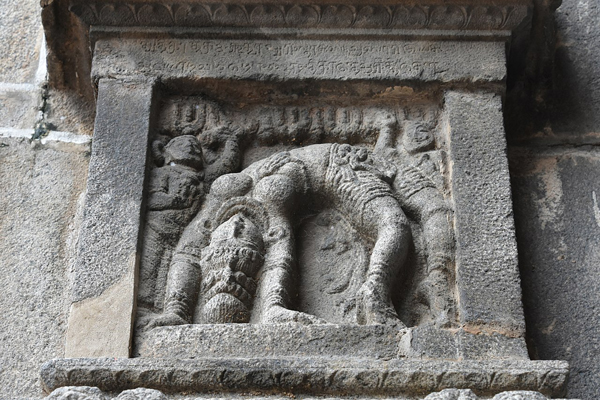
Argala Karana, one of the 108 Karanas depicted on the walls of Nataraja Temple at Chidambaram.
Nritta and Nritya in Bharatanatyam
Two main elements of Bharatanatyam are, Nritta which involves pure dance and rigorous footwork and Nritya, a combination of footwork with abhinaya (to express).
The basic unit of Nritta in Bharatanatyam is the adavu (the footwork). Accompanying the footwork are a few postures, that make this dance form clearly distinguishable from the others. These are; Sthanam (standing posture), Araimandi (half sitting posture) and Muzhumandi (full sitting posture).
The footwork is in accordance with the talams of music. These talams can be classified into three types: slow, medium and fast. Unlike other classical dance forms of India, Bharatanatyam is known for its rigid postures, rhythmic movement and strenuous footwork.
Footwork is accompanied by hand gestures or hastas which act as a medium of expression. These can be classified into two types; Asamyuta Hastas (single hand gestures) and Samyuta Hastas (double hand gestures) which are in accordance with the shlokas mentioned in the Natyashastra and the Abhinaya Darpana.

Asamyuta Hastas, single hand gestures
An important aspect of Nritya is Abhinaya, which forms the basis of this art form. A Bharatanatyam artist uses Abhinaya as a tool to convey ideas and evoke emotions among the audience members. Abhinaya can be classified into four types:
- Angika Abhinaya - expressing using body movements such as movement of hands, legs and limbs.
- Vachika Abhinaya - expressing using medium of speech such as songs, music and dialogues.
- Aharya Abhinaya - expressing using decorations such costumes, jewelry and make up.
- Satvika Abhinaya - expressing by evoking the state of mind of the character.
Bharatanatyam was given a proper structure by the famous Tanjore Quartet; Chinnayya, Ponnayya, Sivanandam and Vadivelu who are known for their contribution in the field of Carnatic music and dance. Members of the royal court of Marathas of Tanjavur, these great composers are credited for transforming the dance into a refined art form and laying down the components of a Bharatanatyam recital as we see today.
Alarippu - A Bharatanatyam dancer begins the recital with this piece which literally means blooming of a flower. The choreography of this dance piece is centred around the idea of blossoming of a flower, using the concept of Nritta.
Jatiswaram - Using elaborate footwork, gestures and postures, Jatiswaram, is composed of melodic patterns of swaras.
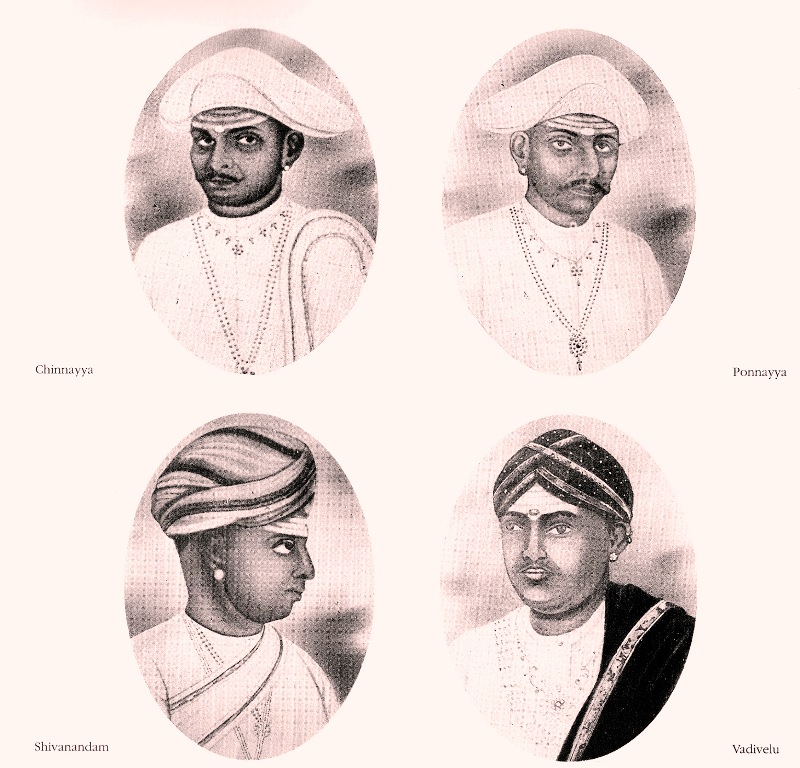
The Tanjore Quartet
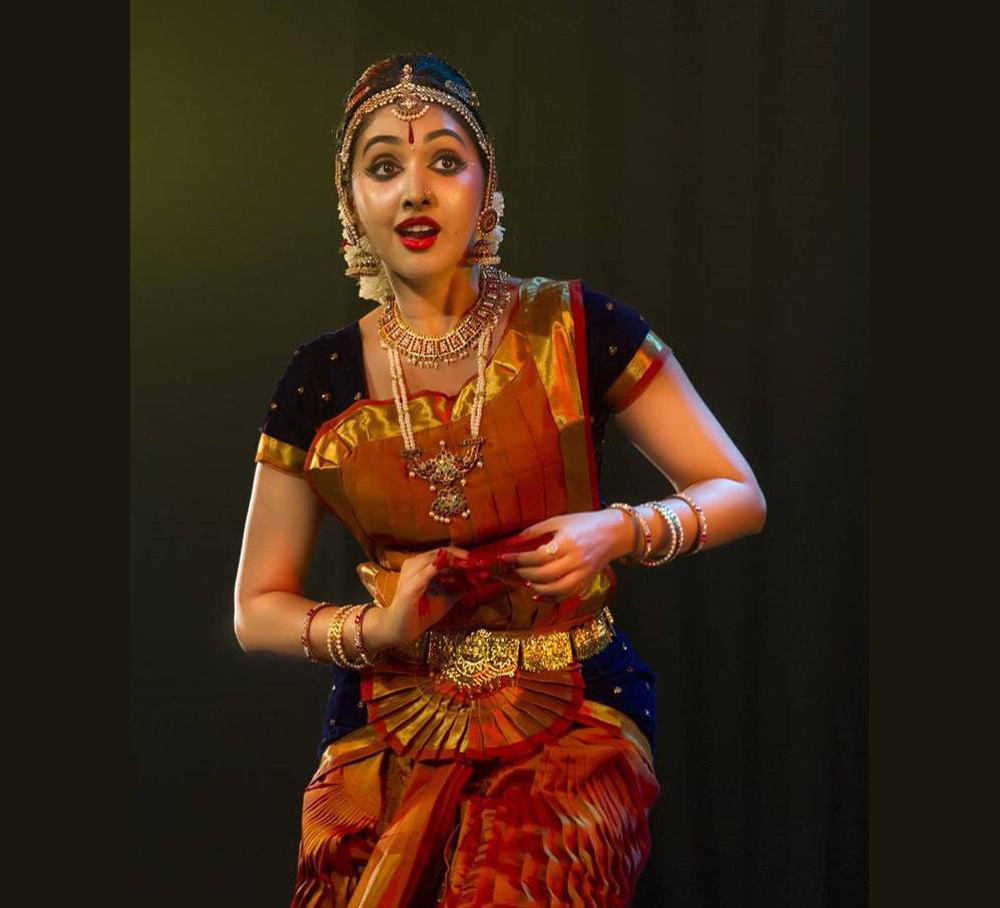
Abhinaya (bhava or expression) by a Bharatanatyam dancer
Shabdam - It is in this piece that the artist uses Abhinaya in order to depict a mythological story or legend. Based on the concept of Nritya, the song to which this piece is performed is also often explanatory of what the story is about. One of the most famous Shabdam in a Bharatanatyam recital is the Mahabharata Shabdam, depicting the gambling scene and its further consequences.
Varnam - It is the longest and the most elaborate piece involving both dance and Abhinaya. One of the most expressive pieces of the repertoire, the varnam allows the dancer to depict various moods using bhav (facial expression) and invoking rasa (emotion) among the audience.
Padam - Padam, based on the concept of Nritya, is more elaborate in terms of the emotions that the artist expresses. This piece allows the artist to connect deeper with the thoughts and emotions of the character using the aspects of bhava and rasa.
Thillana - Thillana is the final piece in the Bharatanatyam repertoire which is based solely on the concept of Nritta. As a finale performance, it is a fast rhythmic piece that engages the audience using strenuous footwork, postures and hand gestures.
Other dance pieces of the repertoire also include, Keertanam, Javali, Bhajan and Managalam.
In a Bharatanatyam recital, the dancer is accompanied by an orchestra. It includes not just the instrumentalists but often the Guru who recites the beats (sollukettu) and guides the dancer using the Nattuvangam.
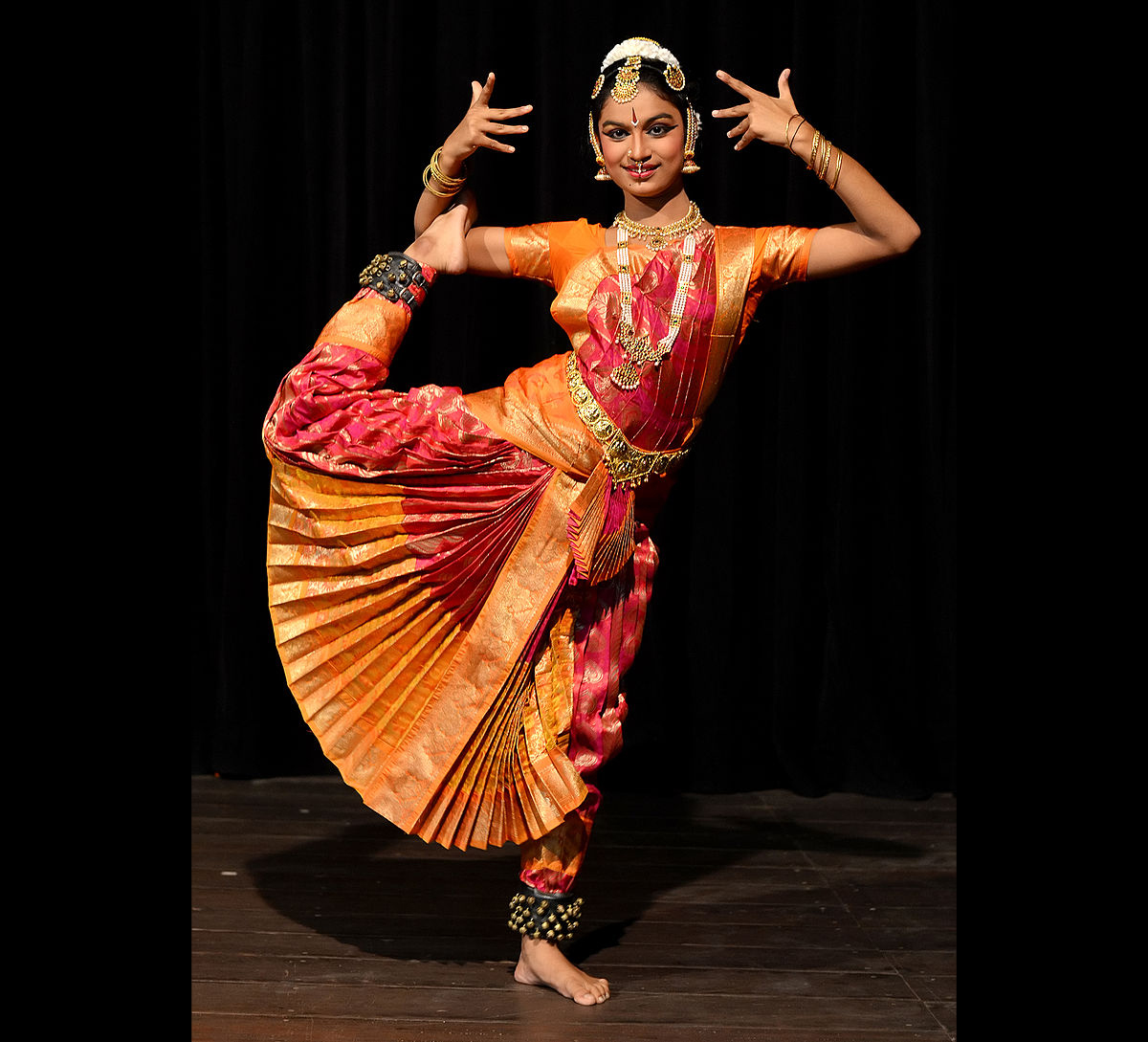
A Bharatanatyam dance pose.
Music and Instruments used in Bharatanatyam
Music and Instruments form a part of the Vachika Abinaya (expression through song and music). Bharatanatyam is performed to the beats and rhythm of Carnatic Music. A performance begins with the vocalist singing the song followed by the instrumentalists rendering the notes. This combination of dance, vocal music and instrumental music is called Prayoga.
Some common instruments that accompany a Bharatanatyam dancer in a recital are; the Mridangam, Veena, Flute, Violin, Talam, Ghatam, Kanjeera, Tambura, Nadaswaram and Harmonium.

A group of musical instruments used to accompany a dancer.
Banis of Bharatanatyam
Though the basic structure of the art form remains the same, there are certain variations that differ depending on the school or style. Different styles of Bharatanatyam, called Banis, emerged as it travelled from the cultural centre of Tanjavur to other places of South India. Gurus and teachers have been modifying and altering this art form over the years as a result of which emerged these different styles:
1: The Tanjavur Style - This bani comes from the court of rulers of Tanjavur and is considered to be one of the oldest. The Gurus of this style were the direct descendants of the famous Tanjore Quartette. Kandappa Pillai, one of the famous Nattuvanars (Guru/teacher) of this style and a direct descendant of the Tanjore Quartette was trained by the famous Kannuswami Pillai. ‘Baroda’ Kannuswami Pillai is said to have led a team of dancers at the Baroda court, sent as dowry during the wedding of the Baroda Prince with the Tanjavur Maratha Princess. Kandappa Pillai is said to have deviated slightly from the original Tanjavur style and introduced stylistic changes emphasising on the role of music and rhythm. Kandappa Pillai went on to train and guide the famous T. Balasaraswati who is credited for preserving this art form when it was on the verge of dying. This style of Bharatanatyam gives equal importance to the two concepts of Abhinaya and Nritta.
2. Pandanallur Style - Pandanallur Style is attributed to the famous Minakshisundaram Pillai who was a direct descendant of the Tanjore Quartette. Brother-in-law of Kannuswami Pillai, Minakshisundaram Pillai deviated from the traditional Tanjavur style and made modifications of his own and named the style after the village to which he belonged; Pandanallur. It is different from the traditional Tanjavur style as it is based on linear geometry and focuses more on precise movements. Pandanallur style of Bharatanatyam is known to have subtle movements, gentle and clear footwork with greater use of linear hastas.
3: Vazhavur Style - Vazhavur style was created by Ramiah Pillai of Vazhuvoor town in Tamil Nadu. As the style emerged from the small town of Vazhavur, most performances began with praying to the reigning deity of this village, Gnana Sabesa. One of the famous performers and disciples of Ramiah Pillai is Padma Subramanyam, who is known for her realistic abhinaya which is a key feature of this style. What makes Vazhavur style different from others is its focus on the concept of Lasya and not Tandava. The focus of this style is more on the feminine aspects of dance, with greater use of sringara rasa. Realistic abhinaya is one of the key features of this style.
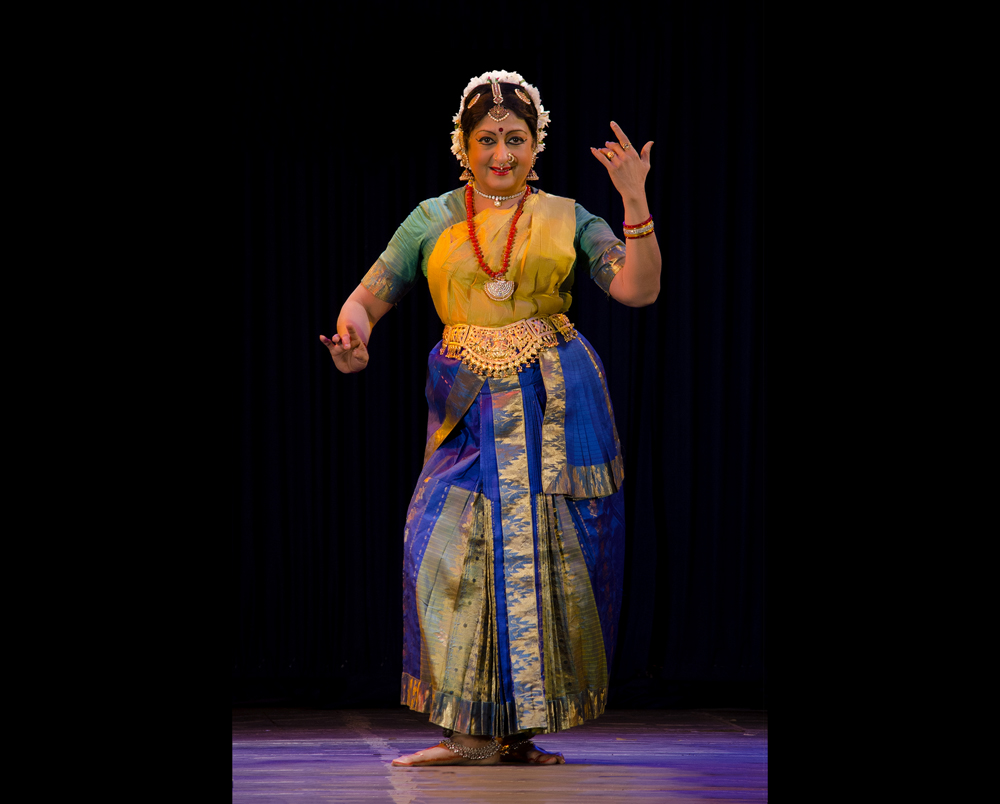
Bharatanatyam exponent, Padma Subramanyam
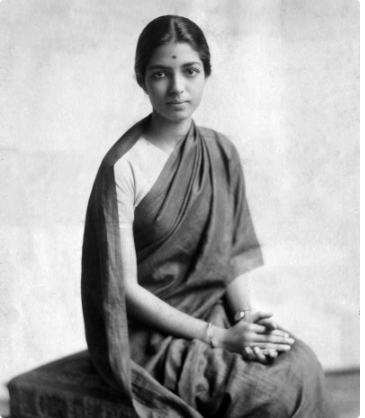
Bharatanatyam dancer, Rukmini Devi Arundale.
4. Kalakshetra Style - This style is credited to the disciple of Minakshisundaram Pillai and a renowned Bharatanatyam exponent Rukmini Devi Arundale. Rukmini Devi founded the Kalakshetra Institute in Chennai making it a platform to promote Bharatanatyam as an art form. This distinct style of Bharatanatyam focuses on stylised abhinaya. Unlike the Vazhavur style, it does not focus on lasya and sringara expression. The Kalakshetra style has comparatively stiffer movements with the use of a few range of adavus.
5. Mellatur Style - This style is credited to Mangudi Doirairaja Iyer. It is known for its soft footwork and emphasis on the sringara rasa. Dancers of this style do not stamp feet hard on the floor allowing the audience to focus on the rhythm of music and the chalenga (ghungaroo).
Costume and Jewelry in Bharatanatyam
Costume and jewelry of an Indian classical dance differ depending upon the state it belongs to. Costume is a form of expression, though the basic costume style remains the same, an artist has the freedom to add objects and props in order to enhance the character portrayed.
Costume, jewelry and makeup form a part of the Aharya Abhinaya in Bharatanatyam.
The Costume and jewelry of this art form has undergone several changes over the years.
From the time of Sadir Attam, the saree was the basic costume that the devadasis wore when they performed. The saree they wore was in the form of a pyjama and the saree’s pallu formed the fan (visri), which is an integral part of the costume even today.
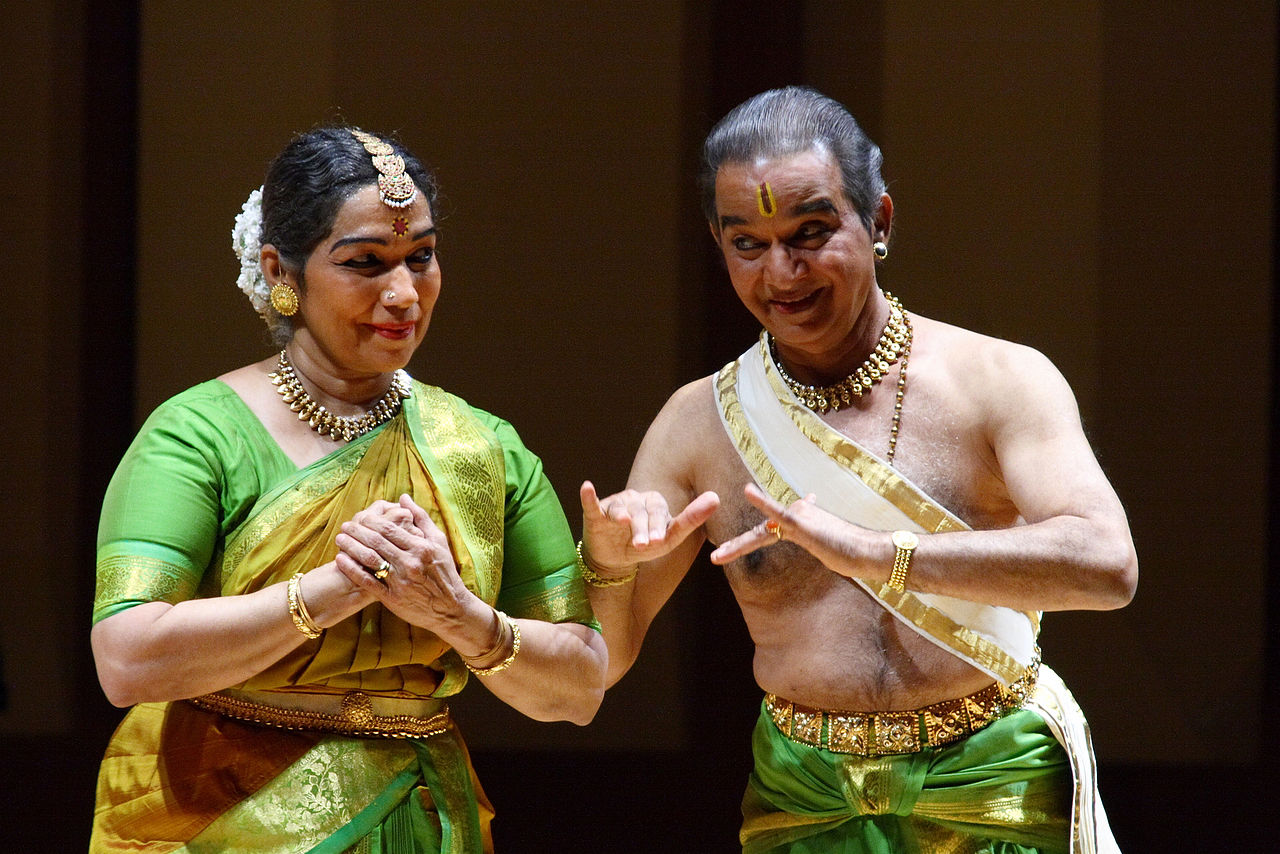
The Dhananjayans
The devadasis of Tamil Nadu adorned themselves in jewelry made of pure gold embedded with precious stones. These were often given to them by their patrons in return for their services. Soon, jewelry was not just a part of costume for the devadasis, it was a symbol of their wealth, power and prosperity and ensured their economic security. As a result of this, the devadasis wore all the jewelry they possessed while they performed.
Today, Bharatantyam as a dance form is more structured and disciplined. This is reflected in its costume as well as jewelry. The most common present day costume is a five piece dress made of Kancheepuram silk which includes, the blouse(ravikkai), pants (kalkacchi), piece covering upper body (Melakku/dhavani), back piece (iduppu kacchai) and the distinguishing element, the fan (visri). There can be variations in this costume where the pants can be replaced with a long pleated skirt with an attached fan. Another version of the costume is a semi-stitched saree in the desired length.
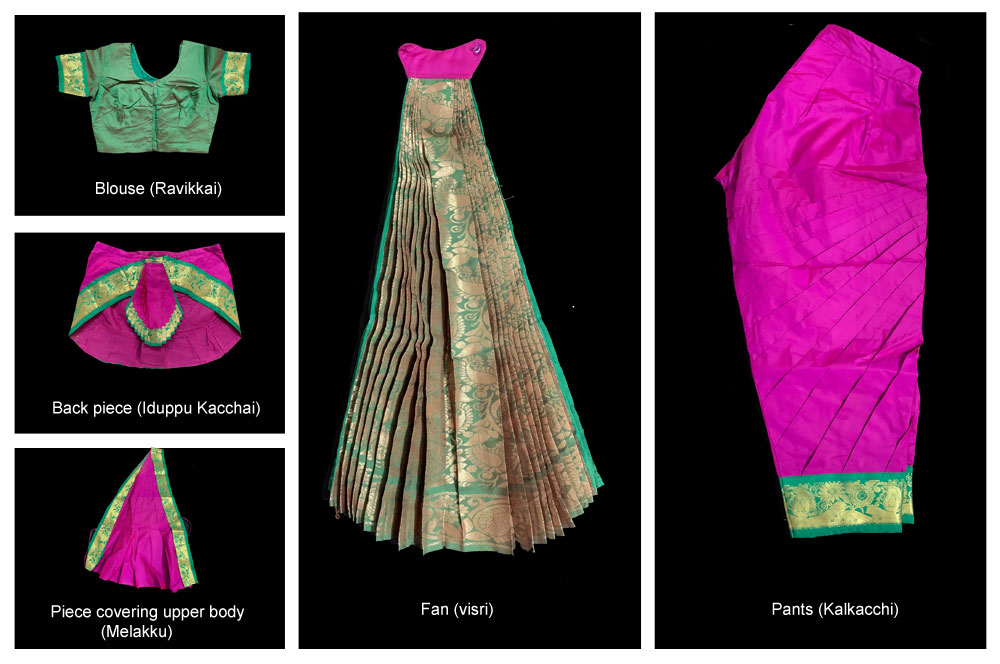
The components of a Bharatanatyam costume.
For a male dancer, though the upper body is mostly uncovered, they can adorn a angavastram (upper covering). Other elements of the costume include the pants, back piece, fan and the waistcoat.
The jewellery worn by Bharatanatyam dancers are characteristic to the region of Tanjavur in Tamil Nadu. The dancer plaits her hair and wears lots of mallipoo (jasmine flowers) and kanakambaram (orange and yellow flowers).
The dancer’s hair is further adorned with the rakkoti, kunjalam commonly worn by the women of Tanjavur.
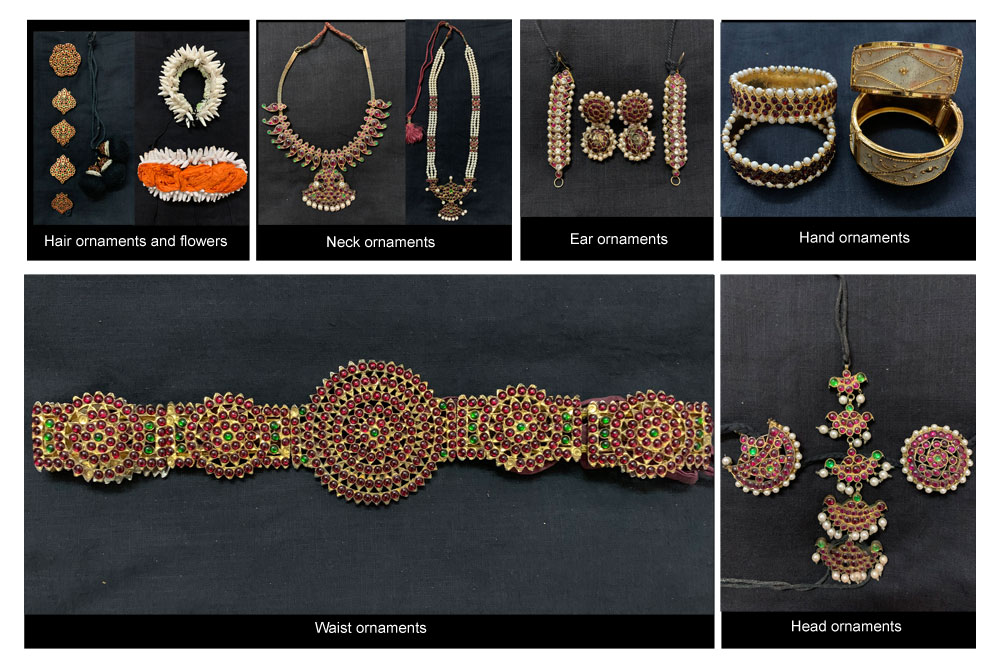
Jewelry used in Bharatanatyam.
Ornaments are worn adorning head, nose, ear, neck, hand, fingers, waist and feet
Head - surya chandran and netri chutti
Nose - mukuthi, nathu
Ear - Jimikki, Todu, Mattal
Neck - choker (padakam, mangai malai) and long necklace (muthumalai, kasumalai)
Hands - valayal, vangi
Finger - modiram
Waist - ottiyanam
Feet - ghungharoo
Other than these, ornaments attributed to certain characters portrayed can be adorned in order to enhance abhinaya and story-telling.
Bharatanatyam as an art form has grown over the years in terms of style, costume and jewelry. Out of the temple complexes to stages across the world, Bharatanatyam is one of the most widely known classical dances of India. It has attracted young students of other nationalities who come to learn and enlighten themselves with the intricacies of this art form.
Dance forms of India have evolved with time, trying to sustain themselves in this fast changing environment and so has Bharatanatyam. Today, it does not restrict itself to Carnatic music but to songs of other origins showcasing the intermingling of different cultures. Originally a solo dance form, Bharatanatyam is now performed as a group performance on various themes related to society, science and culture. Despite all these changes, the essence of this dance form remains constant.
 Government of Indiaa
Government of Indiaa

 Recognizing the ongoing need to position itself for the digital future, Indian Culture is an initiative by the Ministry of Culture. A platform that hosts data of cultural relevance from various repositories and institutions all over India.
Recognizing the ongoing need to position itself for the digital future, Indian Culture is an initiative by the Ministry of Culture. A platform that hosts data of cultural relevance from various repositories and institutions all over India.
